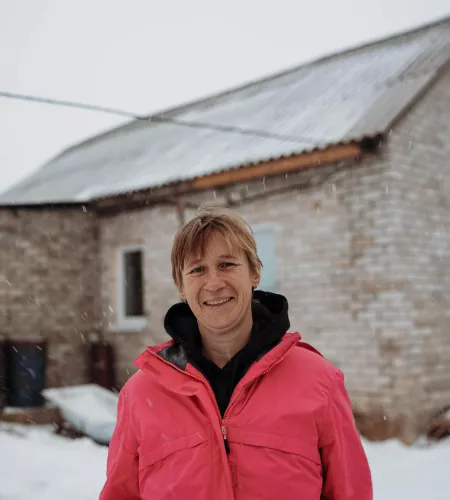“I stood there, with my trolley,” Hielke recalls. “Me, and one man on a bicycle, who lived somewhere nearby. We wanted to enter Ukraine, while on the other side of the border people were lined up, for dozens of kilometres, to leave the country.”
One year of ZOA in Ukraine: a questionable anniversary
It is a questionable first birthday. A few days after the Russian invasion of Ukraine on February 24 2022, ZOA started providing emergency aid to displaced persons in the country. A year later, that work is still in full swing - and much needed.
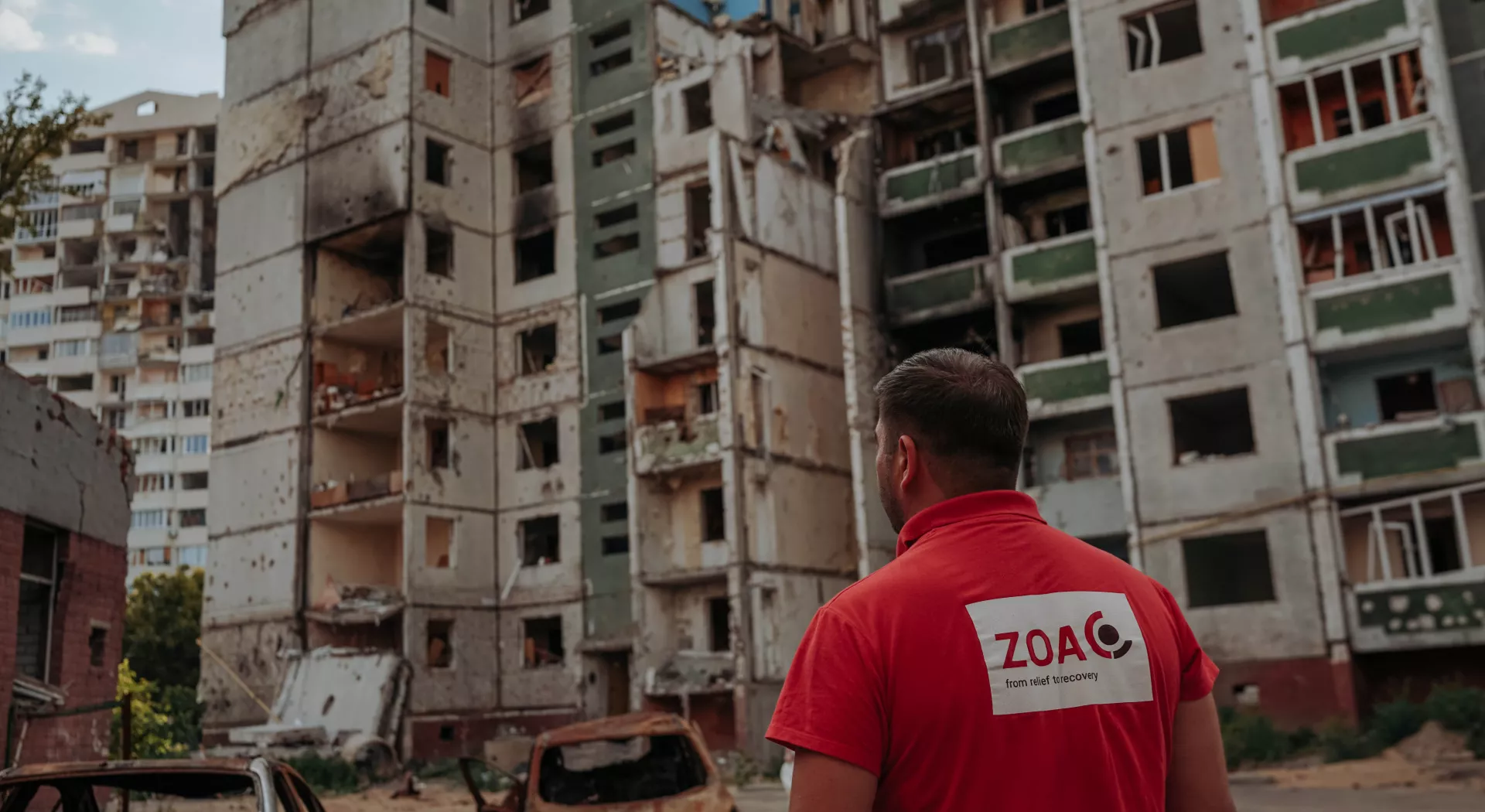
ONE YEAR OF WAR – ONE YEAR OF ZOA IN UKRAINE
‘Emergency aid and reconstruction come together here’
While houses are being repaired, destructive bombs still fall in the country. “Emergency aid and reconstruction come together in Ukraine,” says Hielke Zantema of ZOA's Disaster Response Team. One year of ZOA in Ukraine: a retrospective.
February 2022: crossing the border
It was on a Thursday, he clearly remembers. As a member of ZOA's Disaster Response Team, Hielke Zantema has experienced many crises right from the start. But the Russian invasion of Ukraine on February 24, 2022 is etched on his memory. A few days later, he was on his way to the Hungarian-Ukrainian border.

March 2022: working independently
Partner organisation Dorcas has been in Ukraine for years. In the first weeks, Hielke worked together with Dorcas employees to provide acute emergency aid to displaced Ukrainians. They sought refuge in the relatively safe southwestern part of the country. It soon became clear that there was more than enough work for both organisations to operate independently.
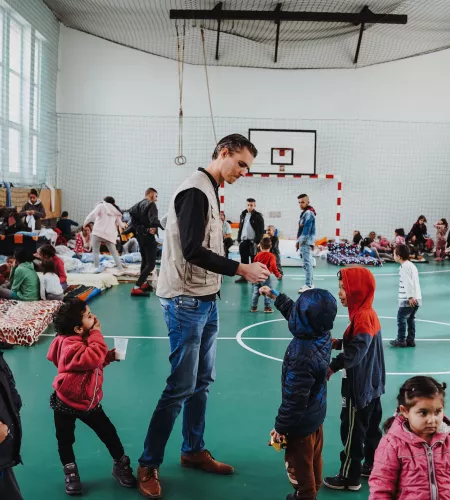
“From that moment on, we started building a team in Uzgorod,” says Hielke. “Many organisations, churches and private initiatives from all over Europe travelled to Ukraine with emergency items. At the same time, we saw in the city that the shops were still full. The local market was still fully operational. We decided to strengthen that.”
ZOA therefore started providing emergency aid via multi-purpose cash through an innovative digital platform. This allows displaced people to spend money themselves to meet their first needs.
April 2022: cash in Uzgorod
While the United Nations mainly provided emergency aid in the large collective centres, ZOA focused on people for whom there was no room there. The UN left after three months.
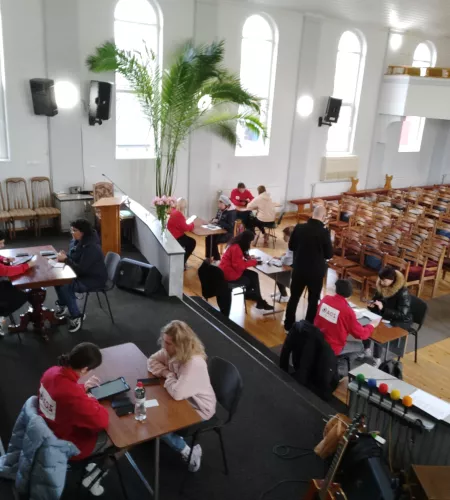
“ZOA is still there,” says Hielke. With a team of about nine men and women from local churches, ZOA employees in Uzgorod province are still registering vulnerable displaced persons for emergency aid via multi-purpose cash. The vast majority of this is spent on food, medicine, transport or shelter.
ZOA has already helped 8,459 displaced Ukrainians with cash to meet initial needs.
May 2022: expansion to Chernihiv
The northern part of Ukraine, above Kiev, was occupied at the beginning of the war. After six weeks, the Russians withdrew there and left a huge mess. Thousands of people in the villages around the town of Chernihiv were left homeless. Their houses were destroyed or so badly damaged that they could no longer be inhabited.
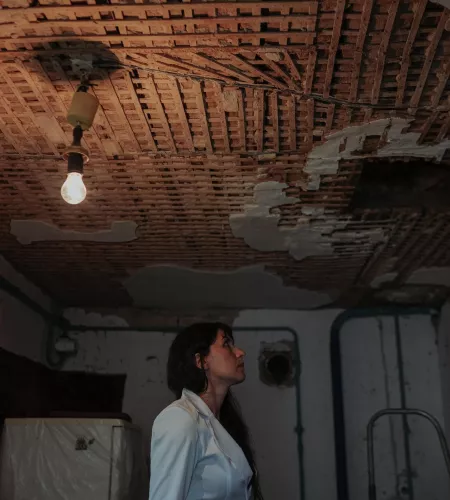
There is work to be done, the ZOA team concluded. Hielke travelled to Chernihiv to set up a second ZOA programme: cash for shelter. “Restoring homes is the greatest need in this area,” he says. “Especially given the cold winters.”
June 2022: repair of houses
A team from ZOA visited the villages around Chernihiv and started going from house to house to make an inventory of the damage – together with local engineers. “They limit themselves to windows, doors, frames, roof plates and heating,” explains Hielke.
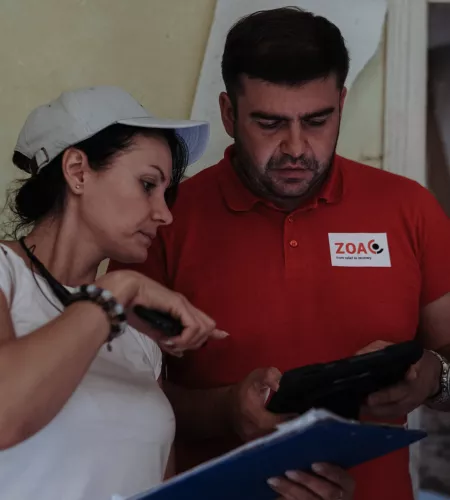
Eligible households receive an average of around 2000-2500 euros to repair their homes. This approach appears to work very well. “The materials are readily available,” he says. “The Ukrainian market is so robust. And everyone has a cousin, son or neighbour who can help to get the work done.”
1,833 people are now living in their homes, which have been restored with the support of ZOA. ZOA also repaired a boarding school where 140 people could safely seek refuge.
December 2022: expansion to Kherson
The first ZOA office opened in Uzgorod, the second in Chernihiv. At the end of 2022, ZOA decided to add a third, in the southern province of Kherson. There, too, work is now being done on renovating homes.
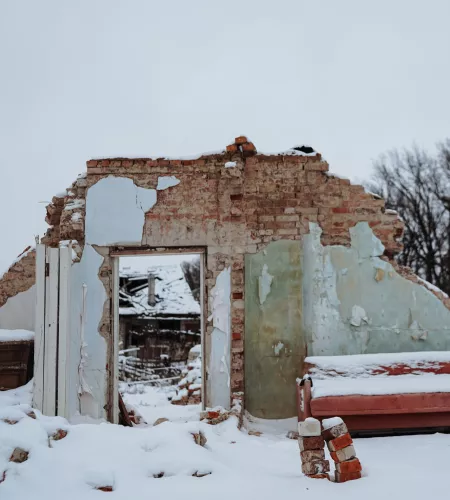
“We do that in the same way as in Chernihiv,” explains Hielke. “But we don't just limit ourselves to light damage in this area. If it is necessary for the residents, we also provide money for more radical repairs, such as masonry.” In such cases, people can receive up to 7500 euros per house.
In the near future, ZOA hopes to help 1,000 to 2,000 households in the Kherson province with the repair of their homes.
January 2023: the suffering in Kherson
A month before the questionable anniversary of the war in Ukraine, Hielke was in the country for the fourth time. In the province of Kherson, the suffering caused by this conflict hit him hard. “The physical damage is comparable,” he says. “You see burnt-out tanks, broken bridges, junk everywhere. But the people… They are psychologically very vulnerable. Seven months of occupation is different from six weeks.”
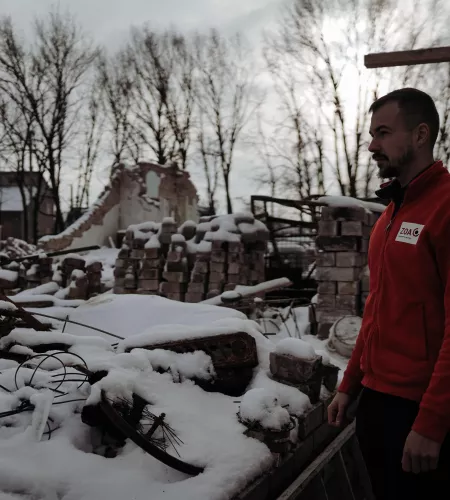
February 2023: emergency aid and reconstruction
From emergency aid to reconstruction – in Ukraine the two phases of ZOA's work come together. “The lack of a house that protects you from wind, rain and cold is an acute, life-threatening emergency,” says Hielke. “At the same time, it is a form of reconstruction, because new windows and doors will benefit people in the long term.”
A year ago, ZOA's Disaster Response Team would never have expected emergency aid to be needed in a middle-income European country. It is difficult to predict how long ZOA's presence will be needed. "But I'm afraid it won't be much shorter than three to five years."
